We look at the Suame Magazine as a factory with many departments. All workshops are specialised in one part of the car. We hire different artisan workshops in every stage of the car. In our workshop we assemble the car parts produced by other workshops.
Author Archives: Melle Smets
Adaptability
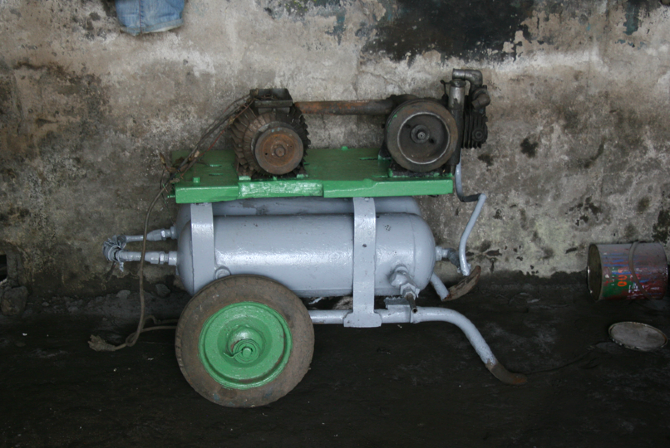
SMIDO has over 5000 members belonging to one of the twelve trade organizations. They are masters and apprentices. An apprentice can become a senior apprentice after three years and than he needs to work another three or four years to get approval of the master and than he is ready to become a master himself. This is a good system of ‘hands on’ learning, but SMIDO is afraid that the lack of theory and ICT knowledge will in the end be fatal to the survival of Suame. They see Suame Magazine as a ‘follow’ industry’ not as an innovative industry. ‘We don’t make cars here, we repair them and prepair them for the Ghanaien road conditions and load requirements. If cars get filled up with software and we don’t know anything about this, we will not be able to do anything with these cars anymore.’ Says Konlan Reuben who is responsible for computer courses at SMIDO.
Innovation might be a problem and getting funds is an even bigger problem because banks in Africa seem only to be interested in quick returns and the government doesn’t seem to be interested in long term development either. Its too risky for them, they would say. Yet the inventiveness of the place is stunning. Some of the machines that are used were locally made. We’ve seen welding machines and spray paint machines that were made here and even an air pressure machine used to get a high temperature flame for iron cutting. Suame magazine operates like a collective brain and seem to be able to overcome any problem they encounter. Its not through theory that they do this, but through practical knowledge and trial and error. Suame Magazine could be seen as the biggest car plant in the world, a place to live and work, compete and work together. Beyond cars there is a lot to learn from these people. For instance how to live in an economic and social unity and on the same time take part in mobility culture with global proportions. I’m sure ICT will fiend its way somehow to Suame Magazine. Maybe its time to get some computer hackers to this place, it is the informal sector after all.
The Welder and the Communion Wafer

Wunbuy is a master welder and has been in Suame Magazine for over 30 years. He welds not only the cargo constructions for big trucks, but also welds farming and drilling equipment. He is especially proud of the swings, mary-go-rounds and other playground artifacts he has built.Wunbuy is the master of the workshop where several apprentices work for him. The apprentices join the workshop at a young age and learn the trade by vocational learning. The master’s knowledge is based in practice, looking for practical solutions all the time. Suame Magazine is known in Ghana exactly for this hand-on learning through the apprentice learning systems. Most (and best) mechanics in Ghana come from Suame Magazine because of this system. Suame Magazine has grown over the last eighty years to the biggest Car plant in Africa.
Amazingly he does all his welding with welding equipment he has built himself (Actually a lot of the mechanics in Suame Magazine build their own equipment). It is cheaper and when broke easier to fix. This experience in equipment building comes in handy for Wunbuy’s second job: a catholic priest. He has built an equipment with which he can make the communion wafer for Sunday’s mass (photo shows an obsolete model).
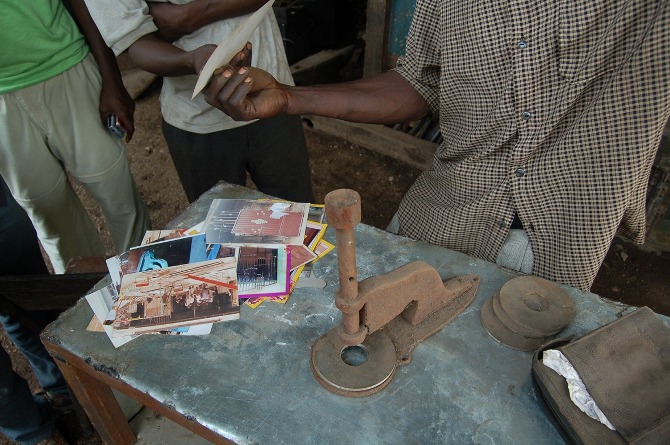
Smaller Systems
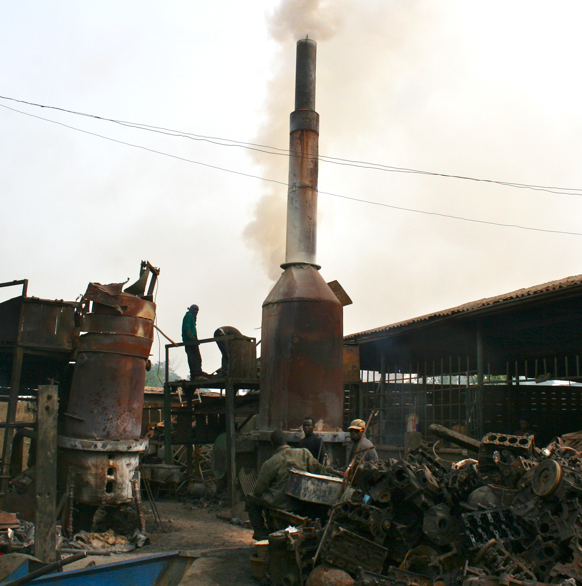
For several reasons the modern project of the Nation State was never properly rooted in African society. Of course there is that idea of the ‘imported system’ alien to the African way of life, but we wouldn’t want to embark on a mission proofing such a feeble statement. The answer would not only be uninteresting but also irrelevant now that also in the western part of the world, due to globalisation, the Nation State has mutated into something else entirely and a far stretch from the original concepts. You see two developments at the same time, when political and economic structures get bigger, local identities tend to get stronger. In Europe, we can fiend good examples in Spain. Catalunya and Bask Country are stronger than ever, since the national state has become part of the European union. The nation state and democracy are concepts that try to nail down a certain principle and way of doing things that are in fact changing all the time.
In the United States, in California, there are experiments with so called direct democracy. It means that a law, or certain bills, can be altered if enough signatures are collected. Of course there are organisations that specialize in this collecting of signatures and depending on the difficulty of the subject of the bill they calculate the fee. The word democracy is used as a display of authenticity, but it really is the question if this is what you call the rule of the public.
In the Netherlands we are also more or less finished with Nation building and politics has diverted its attention to more symbolic problems such as the ritual slaughtering of animals. Politics has become a type of ‘Wayang Koelit’, the Indonesian play of shadows produced by thin leather puppets and rhythmic music intended to keep the public in a dreamlike state. In the rhythmic music we recognize the media that reflects on the symbolic political issues and on each other giving the play of shadows weight and meaning.
Politics is also hijacked by big global corporations and institutes that have become too powerfull. They are not only big but have become carbon copies of each other out of fear to miss out on the last financial trends. The advice of consultancy firms like Mackenzie is swallowed as the evangelical truth of capitalism. When the magic has stopped working, everyone goes down into the black hole. We need to differentiate in our models and economic structures. We also need to localize, instead of globalise. If you realize the truth of this, it means that we can actually learn from African local economic systems.
The so called open air market has worked as an alternative model for the Nation State in supplying the material for identities. The marketplace is a neutral place to meet other people from different tribes and religious backgrounds and get involved in trading. In Kumasi Central market you have the market queens; ladies that have organised themselves in trader groups. They are the ones who fly all over the world to get the goods that keep them competitive. Through market gossip they find out where the best goods are to be found. They are involved also on a social level and go to church together. Another example in Kumasi is Suame magazine. The name of this neighbourhood means ‘help me carry this’ referring to the fact that this neighbourhood has been dedicated to mobility for more that eighty years. First it was a place where the British car drawn coaches were repaired, now its cars and trucks that are repaired and upgraded. In the following posts we will try to somehow unravel the way things are organised in Suame magazine, to see how an almost self sufficient system can be surprisingly adaptive towards the global economy.
Suame Magazine starts in Tema Harbour
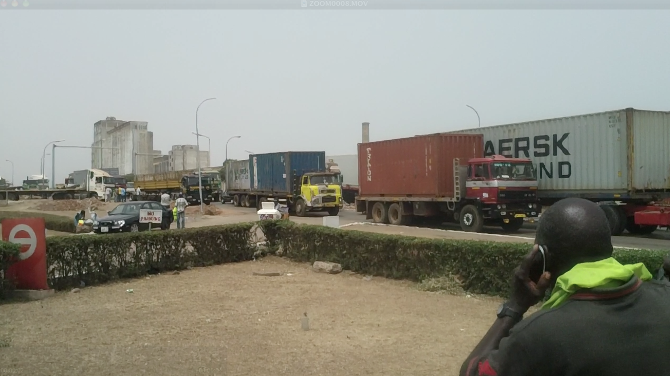
Tema is the harbour of Accra. It is build in the the 60ies 40 km outside the city as a new town. The port is heavily guarded and not open to the public. There is one entrance for traffic coming in, six exits spread over 12 docks to move goods out. We were invited to enter the harbour for a tour to the inspection section on the docks by the Ghanaian Environmental Inspection agency (EPA). We want to see the harbor because secondhand car parts come a shore here. This is the first step in their way to SUAME MAGAZINE.
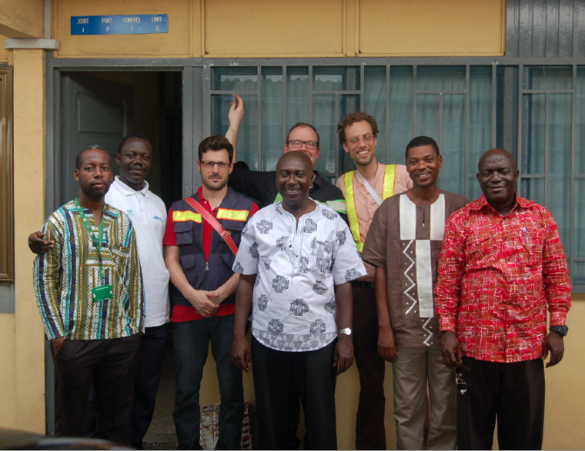
The inspectors gave us some reflector jackets and we were transported into the crowded harbour of old trucks, containers and lots of cars. Behind this scenery giant boats and crane’s drop their shadows over the docks. We stepped out in a yard surrounded with walls of containers. Some containers were opened and the intestines were spread out all over the ground: TV sets, fridges, bikes, stereo’s, stretchers, couches, you name it! Between the stuff laying on the ground labourers and customs employees were emptying the containers and tagging all the products with markers. There were also some guys shouting at the labourers. Our guide told us these guys were the owners of the containers. The game is weather the product is useless or not. A marked product means it will be taken out of business.
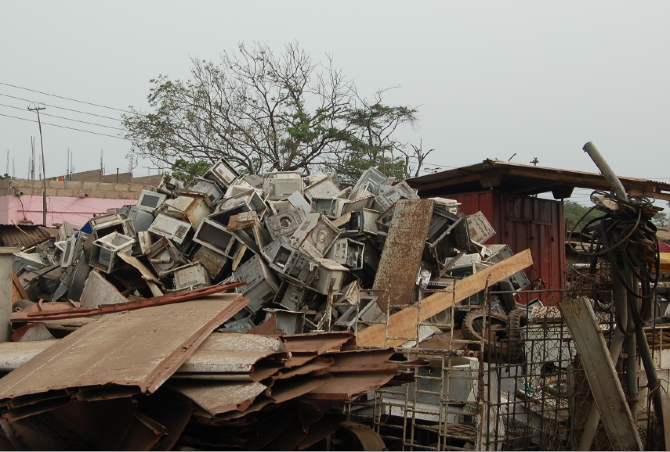
The worst environmental damage of second-hand products is caused by fridges and TV sets. The fridges contain toxic gases and the isolation material is useless when the cooling system breaks down. TV sets contain toxic gas as well and glass witch is a direct damage to the environment because of the broken glass. Ghana has no proper recycling industry for this type of waste. The EPA tries to stop these particular goods. Carparts are no priority. They will be usable and won’t bring any damage to the enviroment.
There is no way to stop the second hand products coming into Africa. There is simply to much coming this way. The traders have a simple strategy. They stuff as much second hand products as possible into containers and ship it to Ghana. When it enters the harbor the authorities have a very short time and manpower to control the tsunami of containers coming into the country. Even when they catch a container filled with old fridges, TV sets and printers they can’t really prove the fact that it’s waste instead of a usefull product.
